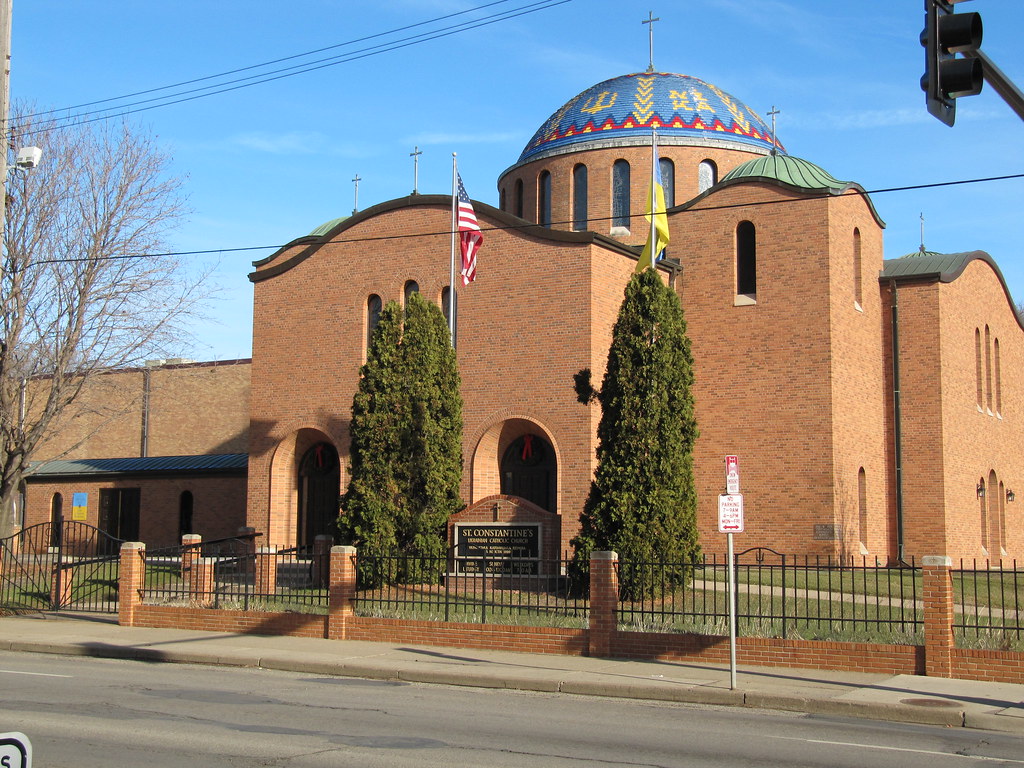.jpg) |
| 1740 Map showing Ukraine in Yellow. |
This post is the third part of my summary of Greg Gressa's article "The Origins and Meaning of Ukrainian Surnames." I found this article on the Ukrainian Genealogy site at least 15 years ago and it has disappeared. Greg Gressa compiled this information from texts by Jeff Picknicki of the University of Manitoba, and works by John-Paul Himka, Frances A. Swyripa of the University of Alberta and others. He included a short biography of sources of information about the history and meaning of Ukrainian names. I would be happy to share this list with interested people. Please email me at pauline.noznick@gmail.com or leave a comment at the end of this post and I will get back to you.
Structural Classifications of Ukrainian Surnames.
Ukrainian surnames can be classified according to their
grammatical structure and morphological features as adjectives and nouns.
Adjectival Surnames
Most Ukrainian surnames that behave like adjectives have the
following suffixes:
–sk,-ck,-zk ,
as well as the endings yj /ij, (masculine ending) or a/ia, (feminine ending).
In the Ukrainian language, adjectives must agree with nouns
in number, gender and case.
Adjectival surnames will have a masculine, feminine and plural form. In the United States, the “j” was
dropped from many surnames that ended with yj, and many times the feminine
ending was no longer used.
Adjectival surnames
are formed from the name of a place where an ancestor lived or originated.
Ukrainian root word
|
suffix
|
Adjectival ending
|
Masculine form
|
Feminine form
|
Plural form
|
English Meaning
|
More
|
sk
|
yj
|
Morskyj
|
Morska
|
Morski
|
Lived near the sea/shore
|
Brod
|
sk
|
yj
|
Brodskyj
|
Brodska
|
Brodski
|
From the city of Brody
|
Halych
|
sk
|
yj
|
Halytskyj
|
Halytska
|
Halytski
|
From the city of Halych
|
Adjectival Surnames
which formed from first names.
Ukrainian first
name
|
Suffix
|
Adjectival ending
|
Masculine form
|
Feminine form
|
Plural form
|
English meaning
|
Pavlov
|
Sk
|
Yj
|
Pavlovskyj
|
Pavlovska
|
Pavlovski
|
Children of Pavlov (Paul)
|
Fedir
|
Sk
|
Yj
|
Fedorivskyj
|
Fedorivska
|
Fedorivski
|
Children of Fedir (various forms of Theodore)
|
Tomko
|
Sk
|
yj
|
Tomkivskyj
|
Tomkivska
|
Tomkivski
|
Children of Tomko
|
Nominal Surnames
Nominal surnames behave like nouns. This type of surname
makes up one of the largest groups in the Ukrainian language. Most are based on
nicknames. The origins of many of
these names are obscure and how they came to be is anyone’s guess. The actual
reasons behind the formation of the surname probably will never be known.
Surnames from names
of birds:
Soroka magpie
Vorona crow
Derkach crake
 |
| European Crake |
 |
| European Magpie |
Surnames from names
of animals:
Baran ram
Buhaj bull
Vovk wolf
Medvid bear
Kovbe type
of fish
Kotyk, koshka cat
Surnames from plants
and trees
Kulbaba dandelion
Bereza birch
Kalyna cranberry
Surnames from names
of foods
Maslo butter
Maslianka buttermilk
Smetana cream
Kapusta cabbage
Surnames suffixes
that indicate progeny, regional origin or regional characteristics.
The following
suffixes are added to first names to indicate progeny
-chuk -chak -uk iuk -ak- -ych -evych -ovych -ets -iv -yn -enko
Nominal Surnames with suffixes that
indicate Progeny
First name
|
Suffix
|
English meaning
|
Surname
|
Sava
|
chuk
|
Progeny of Sava
|
Savchuk
|
Maksym
|
chak
|
Progeny of Maksym
|
Maksymchak
|
Taras
|
uk
|
progeny of Taras
|
Tarasuk
|
Pavlo
|
iuk
|
progeny of pavlo
|
Pavliuk
|
Harasym
|
ak
|
progeny of Harasym
|
Harasymak
|
Roman
|
ych
|
Progeny of Roman
|
Romanych
|
Danylo
|
ovych
|
Progeny of Danylo
|
Danylovych
|
Mykhailo
|
evych
|
Progeny of Mykhailo
|
Mikhailevych
|
Prokip
|
ets
|
Progeny of Prokip
|
Prokipets
|
Fedir
|
iv
|
Progeny of Fedir
|
Fedoriv
|
Pavlo
|
yn
|
Progeny of Pavlo
|
Pavlyn
|
Vasyl
|
enko
|
Progeny of Vasyl
|
Vasylenko
|
 |
| Historical Regions of Ukraine |
The following
surnames indicate the place name where an ancestor may have originated.
Place name
|
Suffix
|
Meaning in English
|
Surname
|
Podillia
|
chuk
|
From the region of Podillia
|
Podolianchuk
|
Polissia
|
chuk
|
From the region of Polissia
|
Polishchuk
|
 |
| Although this is a French map, the Ukrainian Oblasts are clearly labeled. |
Suffixes that
indicate regional characteristics
Western Ukraine:
Surnames with the following suffixes are most common to
Western Ukraine, especially in the oblasts of Volyn, Roven,Ternopil’, L’viv,
Ivano-Frankivsk and Mykolayiv.
–chuk, -chak, -uk, -iuk, -skyj,
ckyj, zkyj.
Central and Eastern
Ukraine: Surnames ending with –enko are most common in central and Eastern
Ukraine, especially in the oblasts of Kiev, Cherkassy, Poltava, and
Kherson. Greg Gressa states
that “Surnames with the –enko suffix are said to be the most typically
Ukrainian. They are common only
among surnames of Ukrainian origin and are not found in any other Slavic
group.”
Surname suffixes that
are common Ukrainian and other Slavic groups.
Surnames ending in the following suffixes are also found
among Russian and Polish surnames, but are spelled differently.
-chuk, -chak, -ych, -ovych and –evych.
Surnames that are
combinations or root words
These surnames combine two root words.
Adjective + noun Bilodub white
oak
Noun +verb palyvoda person
who could burn even water
Pronoun + verb samokhval person
who praises
himself
Numeral + noun sorokolat forty
years
Ukrainian Surnames of
Foreign Origin
Some Ukrainian surnames have foreign origins, but these are
small in number. There are several
ways that Ukrainian surnames show foreign
origins. One way was when a
foreigner settled in a Ukrainian area, he/she might be named for his/her
foreign origins. Some examples include; Besarab/Besaraba, from Bessarabia,
Moskalyk, from Russia or Shvedyk, a Swede.
Sometimes he/she would have a name that came from his/her
native language. Lahenza and Bonk
are from Polish, Shpot, German; Halibey and Murza are of Tatar origin and Lupul
and Dzera are Romanian.
In the case foreign origins of Ukrainian surnames, there is
a family story that some of my ancestors were Czech. The family name was Rychlyj, and in my genealogy research, I
have come across this name many times, especially in immigration records. The few times I saw this name attached
to a Ruthenian(Ukrainian) immigrant, it was to a member of my family. All the other immigrants were either
Bohemian or Moravian, which are regions in the Czech Republic today,





.jpg)

